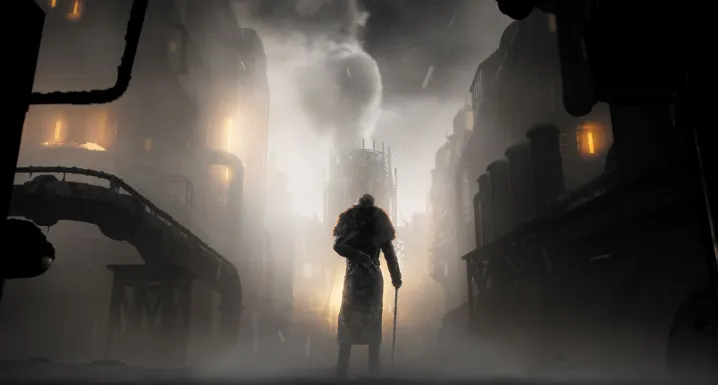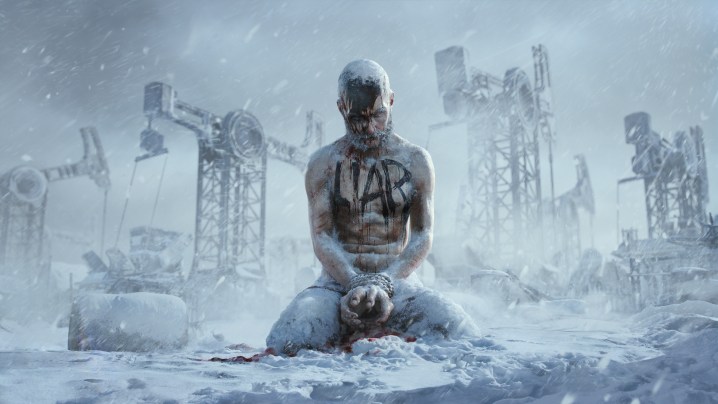In the original Frostpunk, the main goal is to survive an icy apocalypse and reestablish civilization around a powerful generator while slowly gathering resources, building structures with them, and dealing with a plethora of ethical questions along the way. It’s a challenging game, but after dozens of hours and several decisions, players have a solid city center that can withstand the apocalypse.
In Frostpunk 2, that’s just the starting point.
Developer 11 Bit Studios recently gave me a presentation of the sandbox “Utopia Builder” mode in Frostpunk 2. During this hands-off demo, I saw how Frostpunk 2 has grown much larger in scale, with players primarily dealing with building entire districts and influencing council votes rather than concerning themselves with gathering tiny amounts of resources and the minutiae of building a small city. That’s a bold approach for a city builder sequel, as they don’t usually change the gameplay this much, but 11 Bit Studios is confident with its large-scale swing. Frostpunk 2 may expand on the original, but it’s not throwing away what made the 2018 gem so special.
A true postapocalyptic game
The developer believes Frostpunk 2 is postapocalyptic in the truest sense. While that term was often applied to the original, its developers pointed out in my hands-off preview that the original game technically occurred during an apocalypse and was mainly about surviving it. Meanwhile, this sequel takes place 30 years later and is more interested in challenging players by having them manage a society that’s saved itself and is trying to evolve following an apocalyptic event.

In practice, that means Frostpunk 2’s gameplay lies somewhere between the original’s and that of Cities: Skylines. The hands-off Utopia Builder demo began with a city the size of what players would have built by the end of the first game; this isn’t the entire city, though, just the starting central district. The developers quickly built housing districts on one side of that central hub, pointing out that time in Frostpunk 2 now progresses in weekly increments instead of daily.
They explained how resource management is still a part of the game, but that it also takes place on a more macro level. It’s tied to supply and demand for specific resources that districts can provide. Ultimately, the goal is to create synergies between districts so there’s a constant flow of the resources required to keep your city growing and people happy. That’s easier said than done, though. Frostpunk 2 is still a difficult game that will present complex decisions for players to deal with.
Choices, choices
Challenges were mostly centered around two communities of peoples that populated this “utopia”: the industrial and technical-focused Engineers and the survivalist and adaptive Foragers. As players grow their city, they’ll need to improve it by completing research in the Idea Tree. Each community will present solutions for the player to choose from.
In this demo’s case, the question of “How do we produce more food?” was proposed. The developers chose to side with the Foragers, who wanted to use human waste to create more fertilizer. This one decision had clear consequences throughout the rest of the demo. The Engineers eventually asked if they could chemically treat the sewage to prevent disease, which the developers agreed to, and then learned that children were being used to obtain the biowaste.

As these children fell ill, the developer had to offer compensation and bring up the issue with The Council. Instead of being run by a single person, The Council now makes important decisions for the city. They vote on various problems players encounter, but can be influenced by promises to build or research certain projects. Of course, players will have to follow through on these promises or deal with the consequences.
Altogether, these systems create a city-builder sequel that stands out from its predecessor while still retaining its spirit. As a fan of the original Frostpunk, 4X strategy games, and district-based city builders like Cities: Skylines, Frostpunk 2 looks very promising. It scales its challenges and gameplay systems up while also holding on to the ethical dilemmas and emphasis on consequence that made the original so great (and depressing).
Frostpunk 2 will launch on PC sometime in 2024.
Editors' Recommendations
- Cities: Skylines 2 devs offer DLC refunds as console ports get delayed
- Frostpunk 2 will bring snow to a sunny July when it launches on PC
- Frostpunk 2 will come to PC Game Pass when it launches this year
- Cities: Skylines 2: release date, trailers, gameplay, and more
- Frostpunk 2 will force players to quell humanity’s ambition in 2024




